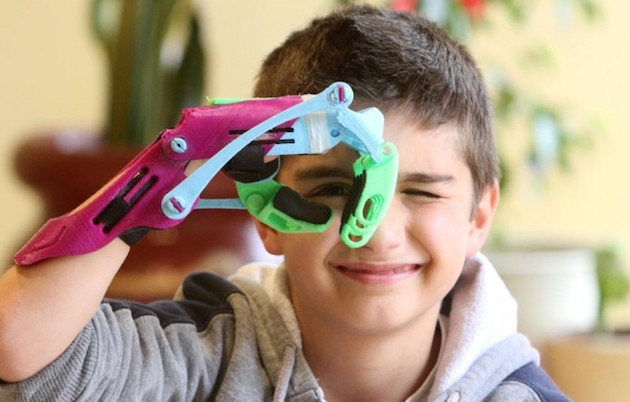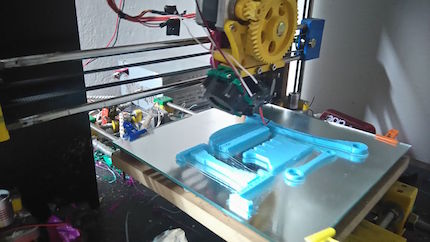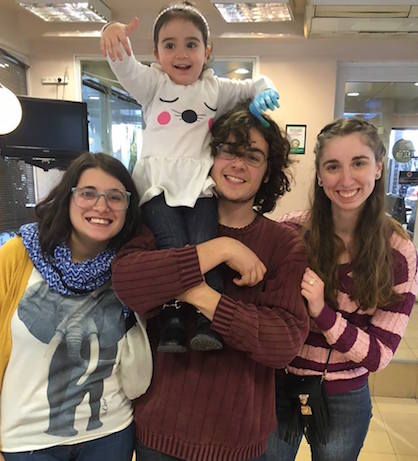3D prostheses that change lives
Franco Mazzocca, a young student of industrial engineering, uses his 3D printer to make hand and arm prostheses, within an international program that is helping thousands of children.
Protestante Digital · MENDOZA · 16 JUNE 2017 · 16:20 CET

"Atomic ambassadors" could be the name of a new series of superheroes. But in this case, reality surpasses fiction.
A young is putting his talent at the service of the most needed. He is Franco Mazzocca, a 20 year-old young man who is currently studying industrial engineering in Mendoza (Argentina).
Passionate about technology, robotics and engineering, a few months ago he locked himself in his house to make his own 3D printer from recycled and other printed parts.
Little did he know then that it would help him to change the lives of children living with serious dysfunctions.
ATOMIC LAB
But the story begins a few months before, Franco tells online newspaper Protestante Digital: "The idea is not mine, but started in Buenos Aires under the direction of Gino Tubaro", a young man publicly praised by Barack Obama for his initiative. Gino understood that 3D printing could be used to make prostheses.
Children do not usually have access to a prosthesis in the market. Specialised companies seldom make prostheses for children because they would be used for a limited time, depending on their growth.
That is why 3D technology brings a "mechanical, cheap and fast" solution, explains Franco.
AtomicLab puts families in contact with children who need hand or arm prostheses. Gino Tubaro prepared a 3D design that adapts to all types of profiles and sizes and uploaed it to the network of networks so that anyone can use it.
The project gained popularity in Buenos Aires, and many other places are interested in it. This is how "Atomic Ambassadors" was born. Local groups explain cases of children in different places and lok for people with 3D printers who are able to develop personalised prostheses.

"I registered as soon as I sawthe announcement", explains Franco Mazzocca. "The second case that mentioned was that of Valentino, a boy from Mendoza", the province where Franco lives.
"They sent me the measurements of the hand, so that I could take the model designed by Gino and give it the necessary size", the young student points out.
Then came the usual manufacturing process: "The printer transforms something that is designed on the computer with a 3D program in plastic pieces that then connect, forming a hand."
Therefore, each hand is unique, personalized, appropriate to the characteristics of the child who has requested it. Although it may seem incredible, the final product has a cost that does not exceed 10 Euros.
EMOTION
Once the prosthetic hand was printed, it was time to test it with Valentino. Both the boy and his parents and Franco waited anxiously.
"I was afraid it would not work, and when we arrived, we were all eager to see what was going on. But after a few minutes, Valentino was already beginning to manage it well. A week later I saw him again and he already had a great control of the grip, which is the biggest benefit of the orthopedic hand", Franco recalls.
"Many children have problems of mobility or development of some part of their hands", says Franco. Valentino, because of a disease called agenesis, had been born without fingers.
The plastic prosthesis "takes advantage of the mobility of the wrist, so that it can grab all kinds of objects, without needing electronics, sensors or batteries".
MORE PROJECTS
Due to the huge response and impact of the case of Valentino – it has appeared in the regional press and on television - the University where Franco studies is promoting a similar project, and they have already made their first delivery.
"It's a prosthesis for Virginia, she is two and a half years old, so it is a big challenge" says Franco
"We contacted a family and used another model, which needs other materials that are harder to get. It was more difficult to make the girl understand that the movement of the wrist would now become the grip of his hand, but after a few minutes playing and helping her, she began to catch everything she could grab", he explains.
PASSION FOR HELPING
Franco is passionate about mechanics, robotics and computer science. Moreover, he is an evangelical Christian and believes that "everything I can do comes from God."
"It is something that I have begun to realise this last year: everything I have, whether material, skills, or talents, has been given by God, and He has not given it to me to save it for me, but to serve others.”
"I want to use it to bring the message of salvation. We were able to talk with the families of Valentino and Virginia about our faith in God, and also with many people who have approached us because of the news. Few things make me as happy as that", adds Mazzocca.

Franco believes that many people may be interested in being a part of these altruistic projects, that are effectively changing lives for the better, or in requesting their services. To know more, find the information in theese websites: Atomiclab.org and Enablingthefuture.org.
Published in: Evangelical Focus - science - 3D prostheses that change lives
